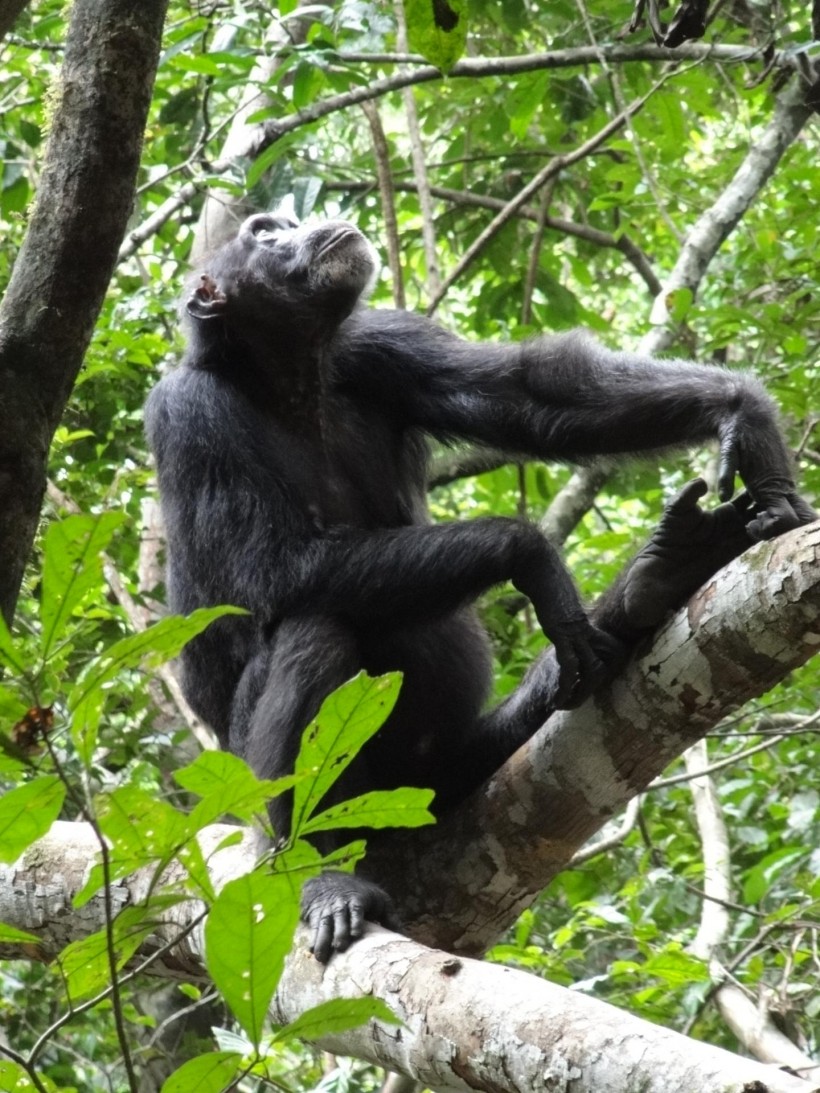Kimberley Hockings, a conservation expert, was concerned. Several chimps with severe lesions on their cheeks were photographed by camera traps in Guinea-Cantanhez Bissau's National Park, where she works, in 2017.

Fabian Leendertz, a wildlife veterinarian, received an email from Hockings. Leendertz, who works at the Robert Koch Institute in Berlin, responded, "I have NEVER seen this with chimps." Leendertz then noticed a similar shot from his study location in Ivory Coast, hundreds of kilometers distant, a few months later. Is it possible that it's the same illness?
Chimps with Leprosy
According to a recent preprint by the two researchers, chimps in both West African locales have leprosy, a disease never before observed in wild chimps. The strains in each park appear to be unconnected, and the scientists believe that they are unlikely to have arisen via human contact. The discovery might point to a previously undiscovered source of leprosy in the wild, revealing new information about a disease that remains a mystery.
Related Article: Can Deadly Indian Nipah Outbreak Lead to the Next Global Pandemic?
Leprosy
Leprosy is an ancient disease, but nothing is known about when and where it first appeared or how it spreads. Millions of individuals worldwide were previously plagued by the sickness, which came with a dreadful shame. Cases decreased, and scientific attention declined as a combination of antibiotics became routine treatment in the 1980s. According to co-author Charlotte Avanzi, a microbiologist at Colorado State University (CSU), Fort Collins, the complexity of researching leprosy adds to the lack of interest.
Mycobacterium leprae, the organism that causes the sickness, and the recently identified M. Lepromatosis cannot be cultivated in laboratory cells. The infection can only be reproduced by injecting it into armadillos or mouse footpads.
Only Infecting Humans
For years, scientists believed leprosy exclusively affected humans. However, scientists have discovered the disease in nine-banded armadillos in the Americas and red squirrels in the United Kingdom over the last two decades. Both species share a bacterial genotype known as 3I, which has been connected to human illnesses in medieval Europe. The infection appears to have spread from people to animals in both cases. Scientists have also discovered rare cases of leprosy in caged animals, such as chimpanzees.
Spreading to Other Species

Human illnesses have the potential to spread to chimps, with disastrous effects. Leendertz, on the other hand, believes that a recent transfer of leprosy from humans to chimps is implausible because the illness commonly spreads only after continuous, intimate contact, and there has been no recorded occurrences of leprosy among the researchers or local helpers. (Although researchers monitor the chimpanzees, they maintain a distance of at least 6 meters.)
"There is more and more evidence that Mycobacterium leprae is not restricted simply to living in people, but has different habitats that it has evolved to," says John Spencer, an immunologist who researches leprosy at CSU.
Also Read: Experts Warn of Another Deadly Global Outbreak to Strike Within 60 Years
For more health and medicine related news, don't forget to follow Nature World News!
© 2024 NatureWorldNews.com All rights reserved. Do not reproduce without permission.





